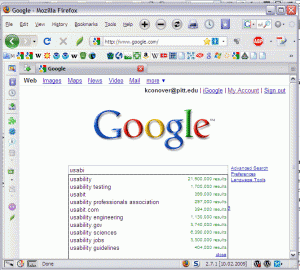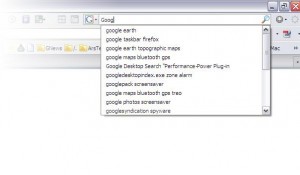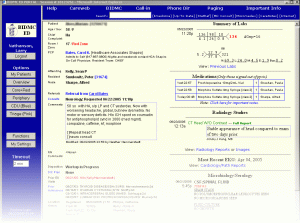To find something using the Google search engine, or a location using Google Maps, we simply type in a few words and then browse the results. This is so much better than what was available before that it has made Google one of the richest corporations in the history of the world.
However, many programs’ search functions still require you to enter the first name in this box, the last name in that box, and the gender in this other box. Faugh.
Users of Cerner, including their ED tracking system, Firstnet, are lucky as regards search (though perhaps not so lucky in other respects). There is indeed a set of boxes where we can type in a variety of identifiers (name, FIN NBR, MRN, CMRN, SSN, Birthdate, and/or Gender). But, we can simply type, in the “name” search box, either “Lastname, Firstname” or “Firstname Lastname.” Then, we are presented with a list of matches, with information such as SSN and birthdate, that we can use to identify the correct patient. Simple. Elegant. Fast.
The Google method – entering just enough information to get a good set of possible matches, then presenting them for review – has now been voted (by user’s choice of search engines) as the standard for searching. As Donald A. Norman says, if we want usable designs, we have to accept standards, even if we don’t like them, and since user expectations are molded by Google, we might as well resign ourselves to it.
There are other ways to make searching easier, and they are starting to become standards as well. Autocomplete is when the program predicts a word or phrase that the user wants to type in, without the user actually typing it in completely. This is effective when there are a limited number of possible or commonly used words, as is the case with most medical software. Autocomplete can speed up user interactions significantly, especially for those who type slowly.
Autocomplete has been available for many years in some programs – for instance, the financial program Quicken, or Stedman’s Medical Dictionary. In these implementations, the autocomplete appears after the cursor as one types, often in grey, or may fill in multiple fields, as in Quicken. However, autocomplete is more familiar from the ubiquitous search engine Google, and the web browsers Internet Explorer and Firefox. Read the rest of this entry
»





